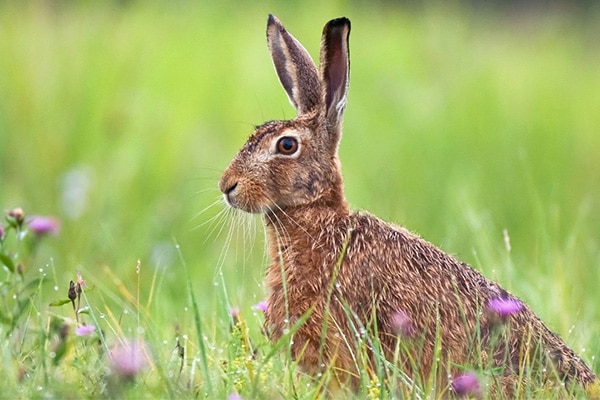
Challenges for shooting in animal welfare shake-up
Read Conor O’Gorman’s blog following the inclusion of plans for new animal welfare legislation in the Queen’s speech in parliament yesterday.
Get information on the legal shooting season for mammals and birds in the UK.
Apply for funding for your project or make a donation today
Comprehensive information and advice from our specialist firearms team.
Everything you need to know about shotgun, rifle and airgun ammunition.
Find our up-to-date information, advice and links to government resources.
Everything you need to know on firearms law and licensing.
All the latest news and advice on general licences and how they affect you.
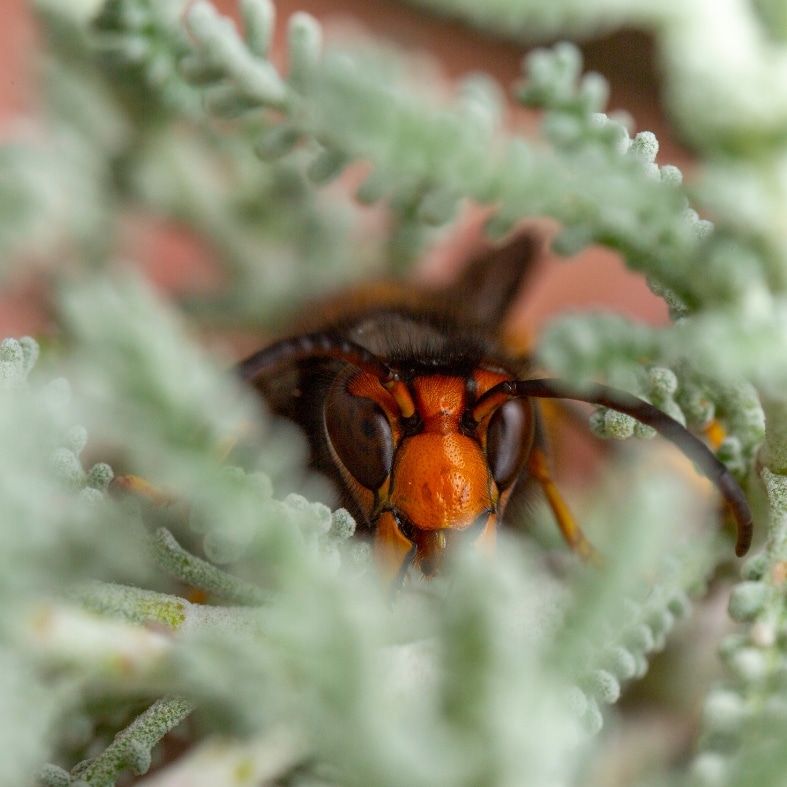

Work is underway to tackle a growing threat to the humble bee – the invasive Asian hornet which has the potential to decimate our native populations of honeybees and bumblebees.
Unsurprisingly, people who shoot are very well placed to spot the invasive Asian hornet. Spring is often the time of year that shoot work parties are out undertaking vital conservation work, habitat improvement and pest control in the countryside.
The UK’s pollinators are fundamentally important to all of us – without them our chances of survival would be very slim. And while all animals, big or small, have their place in ensuring our ecosystems run smoothly, problems arise when a stranger arrives unannounced and unwelcome.
Many of you will be aware of the damage muntjac deer or grey squirrels cause to the British countryside and its wildlife. However, the Asian hornet can be more tricky to spot and has the potential to do significant harm of a different kind.

The invasive (yellow-legged) Asian hornet (Vespa velutina nigrithorax) quickly spread all over central, western and southern Europe after hitching a ride on some pottery shipment from China to France in 2004, becoming well-established by 2022. Subsequently, the European-born individuals have made their way over the Channel, with the first sighting in the UK in 2016.
Since 2016, there have been a total of 102 sightings, which includes 85 destroyed nests. There were 71 credible sightings in 2024, with more than 20 nests destroyed, which is considerably less than the 2023 numbers (more than 60 nests destroyed), which were the highest recorded so far.
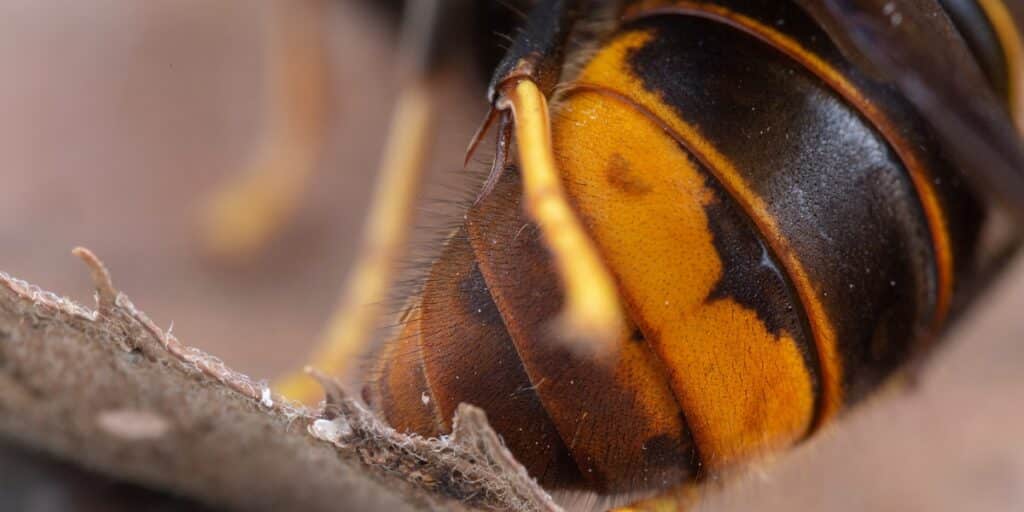
Be aware that not all large striped insects you see are baddies. For instance, we have native European hornets (Vespa crabro), and a few other lookalikes like the giant horntail (Urocerus gigas), commonly called a woodwasp. These guys are not a threat to UK pollinators.
Regarding both species of hornets, be careful as their stings are very potent and can cause severe allergic reaction. And even though the European hornets are not protected in the UK, they are becoming critically endangered. So, unless found nesting in a place which poses danger to humans, please leave the European hornets be.
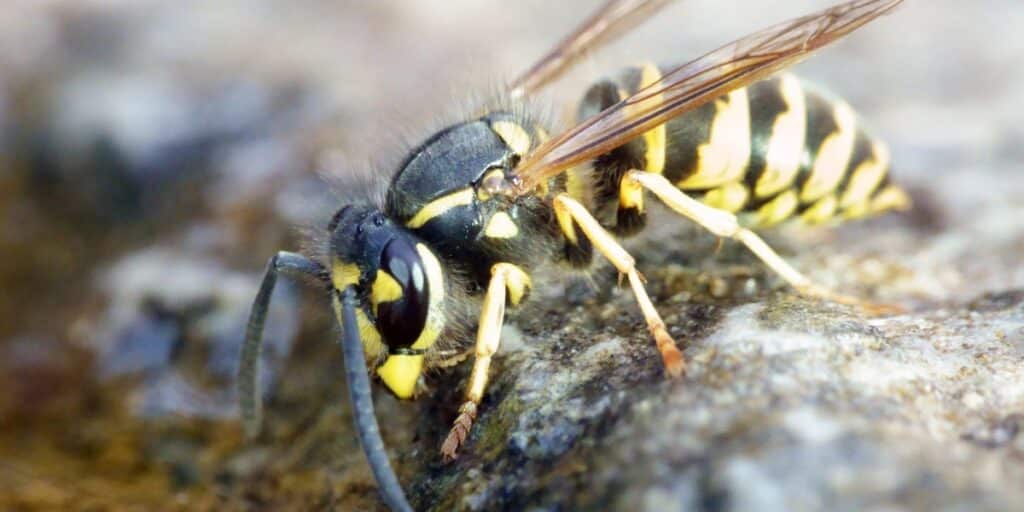
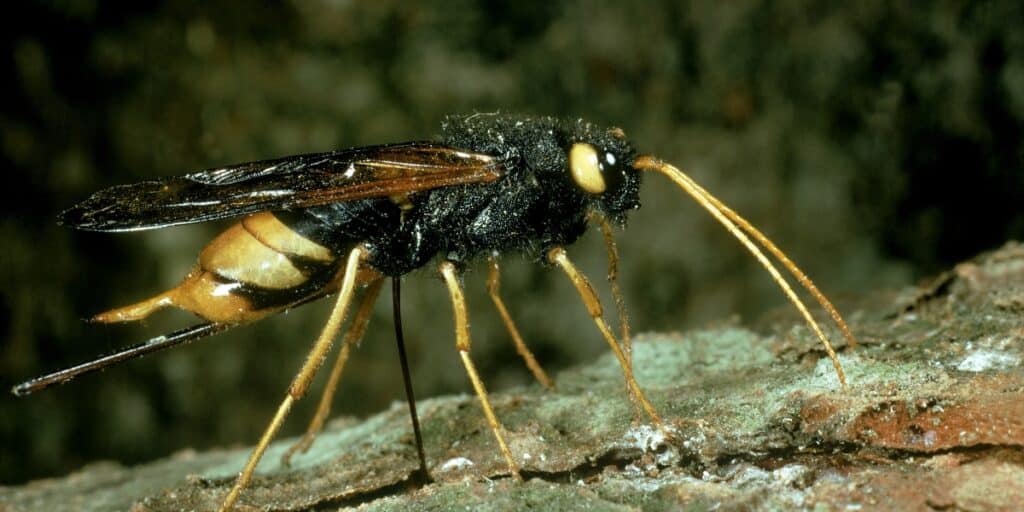
So, how can you tell the two types of hornet apart? It’s not as difficult as you may think – but does require a good eye and attention to detail. European hornets are usually larger, mainly brownish, with clearly visible yellow stripes on the abdomen. They essentially look like over-sized wasps.
Their Asian counterparts are black overall, with bright-yellow legs and a single yellow segment on the abdomen. They are slightly smaller than the European hornet, but much more dangerous. Unlike native hornets, these primarily hunt honeybees.
Asian hornets pose a huge danger to native western honeybees, as the latter have not evolved any defensive behaviours against this enemy. They easily fall victim to the ruthless Asian predators, often becoming so scared that they refuse to leave the beehives and, with the queen stopping laying eggs, the whole colony inevitably collapses.
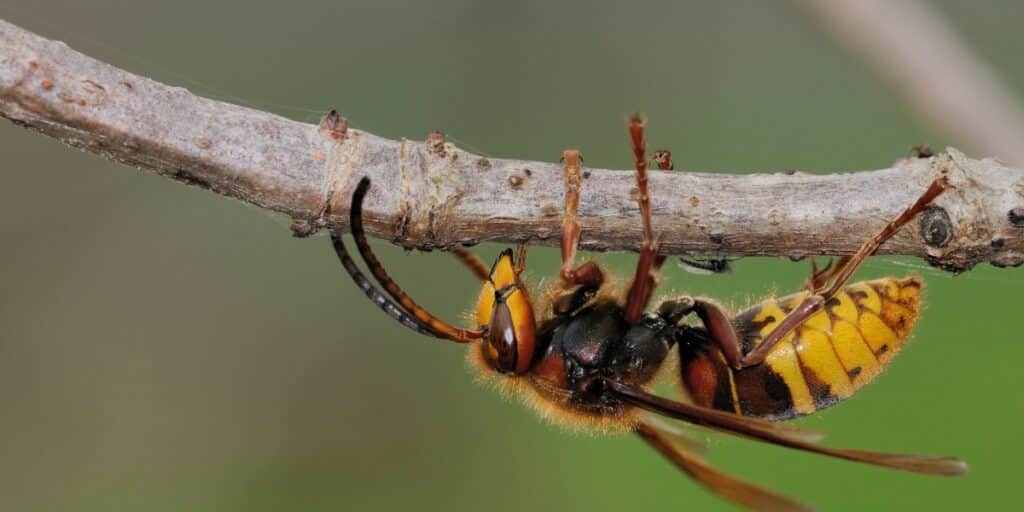
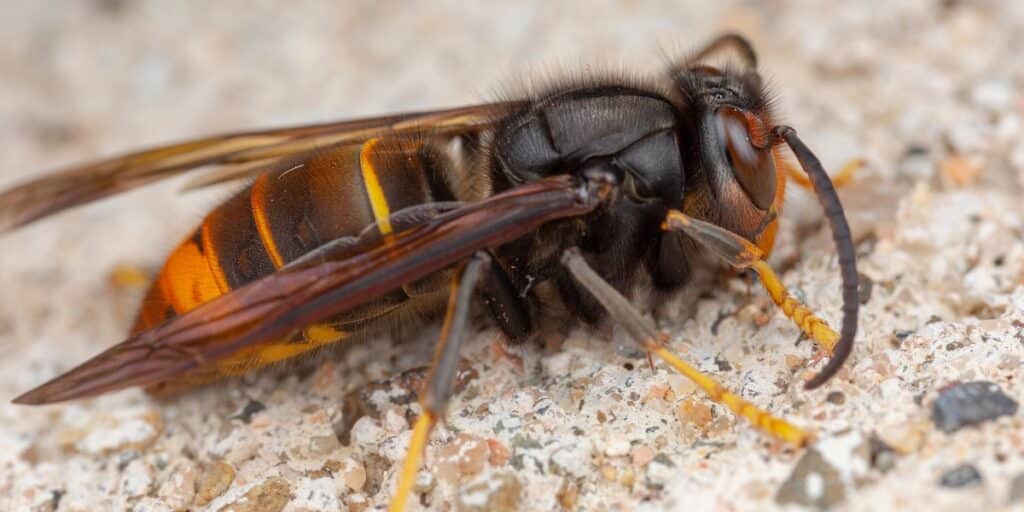
As shooters often spend a considerable amount of time outdoors they’re ideally placed to keep watch and report any sightings of invasive hornets.
Keep an eye on the trees, as that’s where Asian hornets prefer to build their suspended nests. On a quiet day, you might be able to hear buzzing coming from the canopies.
Spring is the time to keep your heads pointed towards the skies as invasive Asian hornets will begin to emerge from their winter slumber around April; however, they can appear earlier if weather conditions become favourable.
Keep an eye out for travelling queens – these are top of the list for eradication. They will re-emerge to start the cycle of breeding and nest building, so this is the primetime to be on the lookout and setting monitoring traps, too.
One colony can produce up to 350 new queens, so it’s essential we find their nests before August/September, when the fertile females are born.

Spotting Asian hornets is absolutely crucial. But be careful, as these insects are aggressive and will often attack en masse. This makes Asian hornets a real threat to gundogs and shooters, especially from July to November, when their secondary nests are active. These are often found in the undergrowth, in brambles and hedges, or high in the trees. The nests are well camouflaged and hard to spot until too late, so be vigilant.
If you do stumble across an Asian hornet nest, we recommend:
There is a lot of information about what to do when you spot an Asian hornet available on the NBU’s website. They also offer training and have a list of local co-ordinators (AHTs) available, here. You can also join their WhatsApp group to receive latest news on this invasive insect.
You can find instructions on NBU’s website for making monitoring traps to catch hornets, which can be placed in sunny areas of your shoot or stalking grounds. The key is in the name – do not use a trap capable of killing the insects as this will be non-discriminatory and native hornets and bees may become casualties. Traps should also have an exit way for non-target species so they can escape.
As shooters, you will already know that traps must be checked regularly, and the same principle applies to these – check them often, release non-target species and report and kill any trapped Asian hornets.
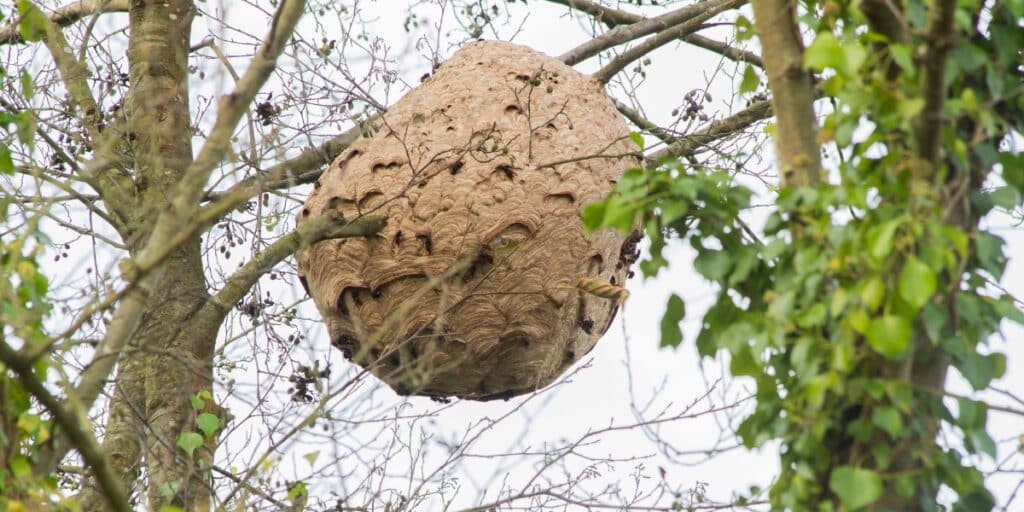
For advice on what to do if you see an Asian hornet, visit the National Bee Unit or the GB Non-native Species Secretariat.
Visit the British Beekeepers Association (BBKA) website for more details on the NBU, how you can help and what help is available to those wishing to join the fight against the Asian hornet.
You can download a reporting app to make the process a lot quicker and simpler. Click here for more details.
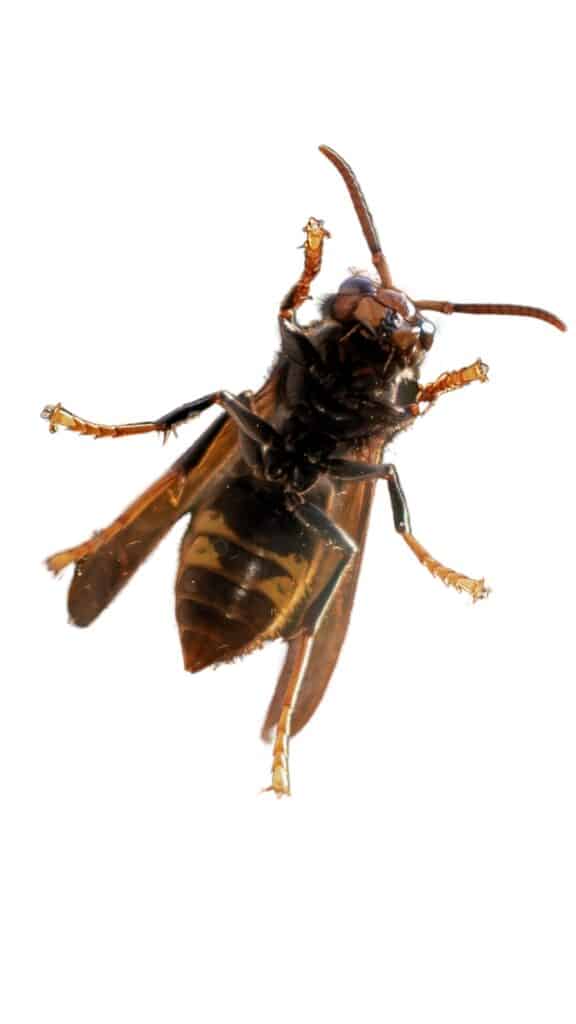
In 2025, there have already been 13 sightings and two nests found and destroyed.
The first report came from Shropshire in January, where a single hornet was found in imported shallots. This was followed by two more cases of single hornets in Kent and Hampshire, in March and April, respectively.
Throughout April, live hornets were reported a total of eight times. Two reports of nests with single hornets and embryos came from Kent and Hampshire in mid-April. These numbers are likely to rise steeply now as the weather warms up.
You can keep up to date on reported cases on the NBU website.


Read Conor O’Gorman’s blog following the inclusion of plans for new animal welfare legislation in the Queen’s speech in parliament yesterday.
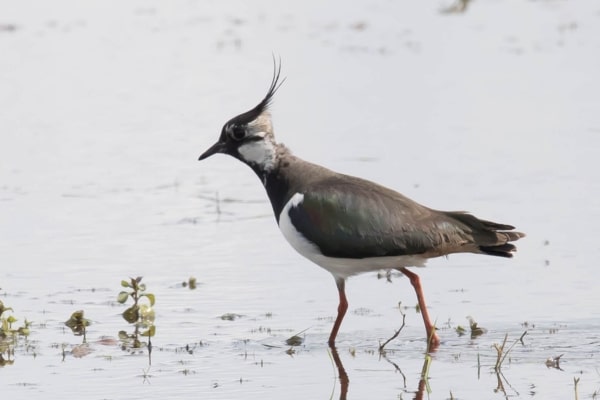
There is less than a week until the deadline for applications for one of two BASC scholarships for the 2024/25 academic year.
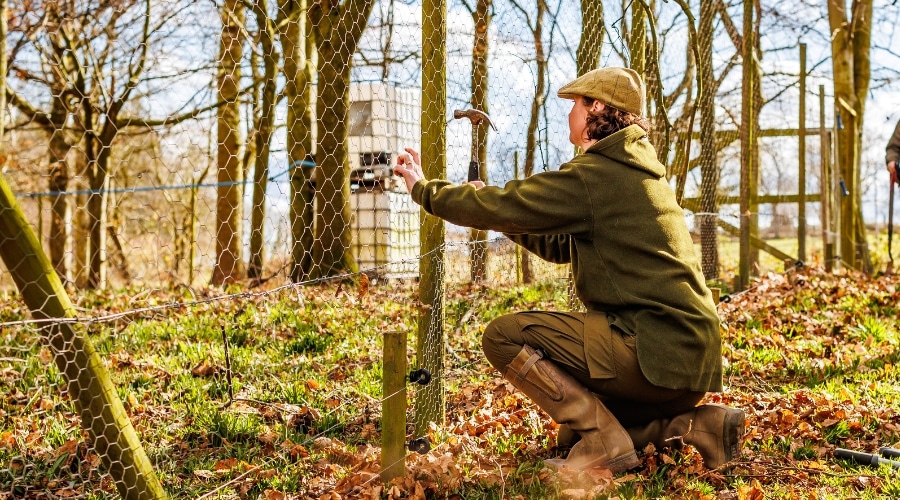
Speaking at debate in the House of Commons, Sir Geoffrey Clifton-Brown has heavily criticised Defra over it’s handling of gamebird release licences in protected areas.
Sign up to our weekly newsletter and get all the latest updates straight to your inbox.
© 2025 British Association for Shooting and Conservation. Registered Office: Marford Mill, Rossett, Wrexham, LL12 0HL – Registered Society No: 28488R. BASC is a trading name of the British Association for Shooting and Conservation Limited which is authorised and regulated by the Financial Conduct Authority (FCA) under firm reference number 311937.
BASC Direct Ltd is an Introducer Appointed Representative of Agria Pet Insurance Ltd who administer the insurance and is authorised and regulated by the Financial Conduct Authority, Financial Services Register Number 496160. Agria Pet Insurance is registered and incorporated in England and Wales with registered number 04258783. Registered office: First Floor, Blue Leanie, Walton Street, Aylesbury, Buckinghamshire, HP21 7QW. Agria insurance policies are underwritten by Agria Försäkring.
If you have any questions or complaints about your BASC membership insurance cover, please email us. More information about resolving complaints can be found on the FCA website or on the EU ODR platform.